Table of Contents
ToggleIn today’s fast-paced world, saving money while shopping can feel like trying to find a needle in a haystack. With prices soaring and budgets tightening, every penny counts. But fear not! There are clever strategies lurking in the shadows, ready to help savvy shoppers make the most of their purchasing power.
Understanding Cost Saving Strategies Purchasing
Cost saving strategies in purchasing play a vital role in enhancing financial efficiency. These strategies not only stretch budgets but also improve purchasing power in various market conditions.
Importance of Cost Saving Strategies
Cost saving strategies enable organizations to optimize their expenditure and lead to sustainable financial health. Implementing these strategies allows for better resource allocation and increased profitability. They help businesses remain competitive in challenging markets by minimizing unnecessary expenses. Strategically managing costs fosters innovation and can even enhance customer satisfaction through lower prices. The focus on cost saving also encourages smarter purchasing choices, directly impacting the bottom line.
Key Factors to Consider
Several factors influence the effectiveness of cost saving strategies. Assessing vendor relationships proves crucial; strong partnerships often lead to better pricing structures. Understanding market trends helps buyers anticipate price fluctuations and plan purchases accordingly. Evaluating purchase volume additionally uncovers opportunities for bulk discounts. Additionally, analyzing product alternatives can identify cost-effective substitutes that maintain quality. Investigating long-term versus short-term savings ensures that strategies align with overall business objectives. Exploring technological tools can simplify purchasing processes, providing insights that drive efficiency.
Effective Cost Saving Strategies

Effective cost saving strategies enhance purchasing efficiency and maximize budgets. Implementing these approaches can significantly reduce overall spending.
Bulk Purchasing
Bulk purchasing enables organizations to take advantage of lower prices and favorable terms. Many suppliers offer discounts for larger orders, resulting in substantial savings over time. This strategy minimizes per-unit costs and maximizes overall value. For example, buying in bulk can lead to discounts of up to 30% on commonly used items. Assessing inventory needs helps determine the optimal order size, ensuring minimal waste and effective use of resources. Establishing strong relationships with suppliers can further enhance bulk buying strategies.
Negotiating Discounts
Negotiating discounts proves vital for securing better pricing. Companies often overlook potential savings amidst routine purchases. Identifying remaining budget flexibility enables businesses to advocate for lower prices. It’s common for suppliers to offer discounts in exchange for longer contracts or larger orders. For instance, negotiating a 10% price reduction on a regular contract can translate to significant savings over a year. Effectively communicating the value of the partnership strengthens these negotiations. Exploring alternatives keeps suppliers competitive and encourages discussions around pricing solutions.
Leveraging Technology
Technology plays a crucial role in maximizing cost-saving strategies. By utilizing the right tools, organizations enhance efficiency and improve purchasing outcomes.
Procurement Software
Procurement software streamlines purchasing processes. These platforms help manage vendor relationships, track orders, and analyze spending patterns. Users can automate routine tasks, reducing manual errors and saving time. Effective procurement software provides insights into cost trends, allowing identification of areas for potential savings. Companies that implement these solutions often experience improved supplier performance and enhanced negotiation capabilities.
E-Procurement Solutions
E-procurement solutions deliver a comprehensive approach to purchasing. These digital platforms simplify the procurement cycle from requisition to payment. Organizations benefit from real-time data access, which allows them to make informed decisions quickly. Enhanced visibility into spending helps to identify opportunities for savings across various categories. Integrating e-procurement tools can lead to lower transaction costs and increased compliance with purchasing policies.
Supplier Relationship Management
Supplier relationship management focuses on cultivating beneficial partnerships that enhance cost-saving strategies. Effective collaboration with suppliers fosters trust and opens opportunities for negotiation.
Building Strong Partnerships
Building strong partnerships with suppliers creates a foundation for mutual growth. Organizations should prioritize clear communication to address concerns and expectations. Establishing regular check-ins facilitates transparency and allows for immediate resolution of issues. A collaborative approach to problem-solving encourages innovative strategies for shared goals. Joint ventures or promotions may yield significant financial benefits. Organizations can also leverage performance reviews to strengthen these partnerships.
Assessing Supplier Performance
Assessing supplier performance helps organizations identify areas for improvement. Regular evaluation of delivery times, product quality, and pricing structures provides clarity on supplier reliability. Tracking key performance indicators enables organizations to make data-driven decisions. Timely feedback on performance enhances supplier relationships and encourages commitment to improvement. Utilizing scorecards creates a standardized assessment method. Identify underperforming suppliers for potential renegotiations or replacements to optimize cost efficiency.
Implementing effective cost-saving strategies in purchasing can significantly impact financial health. By leveraging bulk purchasing and fostering strong supplier relationships organizations can unlock substantial savings. Technology plays a pivotal role in this process streamlining procurement and enhancing decision-making capabilities.
As businesses navigate economic challenges it’s essential to remain proactive in evaluating vendor performance and exploring alternatives. Continuous assessment of purchasing strategies not only improves efficiency but also positions organizations for long-term success. Embracing these approaches ensures that both individuals and companies can maximize their purchasing power while maintaining quality and satisfaction.




